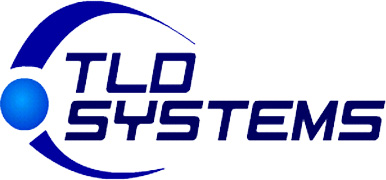“I am wondering if any other podiatry practices are having issues with Aetna Medicare getting paid for CPT 11730? The denial of the claims focusses on “LCD guidelines.” We are sending numerous appeals along with medical documentation and the actual article from Medicare (L34887).”
I am wondering if this is another example of Medicare advantage plan versus traditional Medicare or if this is a matter of not following the rule changes or requirements with respect to CPT 11730. It is important to note that not all Medicare Administrative Carriers have an LCD for Surgical Treatment of Nails. Since Medicare advantage plans do share information, it is important to access LCD L34887 Surgical Treatment of Nails and the associated article A52998 Billing and Coding: Surgical Treatment of Nails
CPT 11730 is defined as: Avulsion of nail plate, partial or complete, simple; single. A partial or complete avulsion of a nail plate is generally performed under local anesthesia. This surgical procedure involves the separation and a partial removal of a border of the nail plate or removal of the entire nail plate from the nail bed to the eponychium, the surgical removal of the body of the nail plate from its primary attachments, the nail bed ventrally and the proximal nail fold dorsally.
When you access LCD L34887, it is important to access and note the following:
Covered Indications: This is important! The medical record documentation must support that one of these reasons supported the partial or total avulsion of the toenail.
- 1. Symptomatic onychocryptosis (ingrown fingernails or toenails)
- 2. Subungual abscess and/or hematoma
- 3. Subungual and periungual tumors
- 4. Injury of the toes or fingers involving the nail component to evaluate the stability of the nail bed or to release a subungual hematoma after a failed puncture aspiration
- 5. Severe or recurrent fungal nail infection that has failed to respond to usual, less invasive treatment (for example, pharmacological treatment, debridement)
- 6. For diagnosis of suspected lichen planus or psoriasis of the fingernail or toenail
- 7. Onychogryphosis or onychauxis
- 8. Congenital or acquired nail dystrophies that jeopardize the integrity
Limitations: This is really important. Especially look at #4 and for future reference #5 below.
- The following are considered not medically reasonable and necessary:
- 1. Nail debridement or removing small chips or wedges of the nail and/or skin that does not require local anesthesia does not constitute surgical treatment of a nail
- 2. Trimming, cutting, or clipping of the distal unattached nail margins does not constitute surgical treatment of a nail
- 3. Surgical treatment of asymptomatic conditions
- 4. Repeat nail avulsion on the same toe or finger following a complete nail avulsion performed more frequently than every 8 months (32 weeks) for toenails or 4 months (16 weeks) for fingernails
- 5. Repeat nail excision on the same toe or finger following a complete nail excision for permanent removal
When you access A52998 Billing and Coding: Surgical Treatment of Nails, it is important to access and note the following:
Documentation Requirements: The medical documentation is very important to support what was performed and subsequently billed to the health insurance carrier
- 1. All documentation must be maintained in the patient’s medical record and made available to the contractor upon request.
- 2. Every page of the record must be legible and include appropriate patient identification information (e.g., complete name, dates of service[s]). The documentation must include the legible signature of the physician or non-physician practitioner responsible for and providing the care to the patient.
- 3. The submitted medical record must support the use of the selected ICD-10-CM code(s). The submitted CPT/HCPCS code must describe the service performed.
- 4. The following information must be clearly documented in the patient’s medical record:
- o Complete detailed description of the pre-operative findings. Include the patient’s symptoms, the physical examination documenting the severity of the nail infection, injury or deformity, and the assessment and plan containing the rationale why surgical treatment is being selected over other treatment options.
- o Method of obtaining anesthesia (if not used, the reason for not using it).
- o A complete detailed description of the procedure performed.
- o Identify the specific digit(s) and make note to the nail margin(s) involved on which the procedure was performed.
- o Postoperative observation and treatment of the surgical site (e.g., minimal bleeding, sterile dressing applied).
- o Postoperative instructions given to the patient and any follow-up care (e.g., soaks, antibiotics, follow-up appointments).
ICD-10-CM Codes that Support Medical Necessity: To support the billing of CPT code 11730, the appropriate, covered ICD-10-CM code to demonstrate the pathology that was present must be linked to CPT code 11730. There is a list of 392 ICD-10-CM codes.
With the assumption being that Medicare advantage plans are supposed to follow the rules and regulations of traditional Medicare, I believe that you now have hard copy proof to file an appeal with a high likelihood of success, as long as the rules are followed.
This is my opinion.
Michael G. Warshaw, DPM, CPC
Terrific NEWS!!!
THE 2025 PODIATRY CODING MANUAL IS NOW AVAILABLE in either Book or Flash-drive formats. It has been completely updated for the calendar year 2025 including the NEW policy for the application of skin substitutes that goes into effect February 12, 2025. Many offices across the country consider this to be their “Bible” when it comes to coding, billing, and documentation. The price is still only $125 including shipping! To purchase, access the website drmikethecoder.com.
No credit card? No problem! Just send a check for $125 to the following address:
Dr. Michael G. Warshaw
2027 Bayside Avenue
Mount Dora, Florida 32757



Read Comments